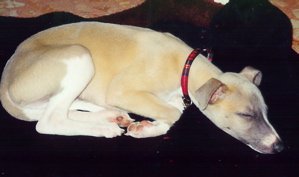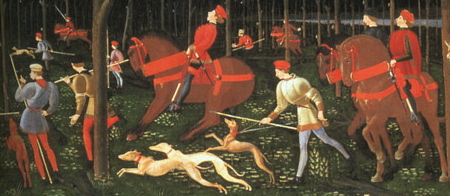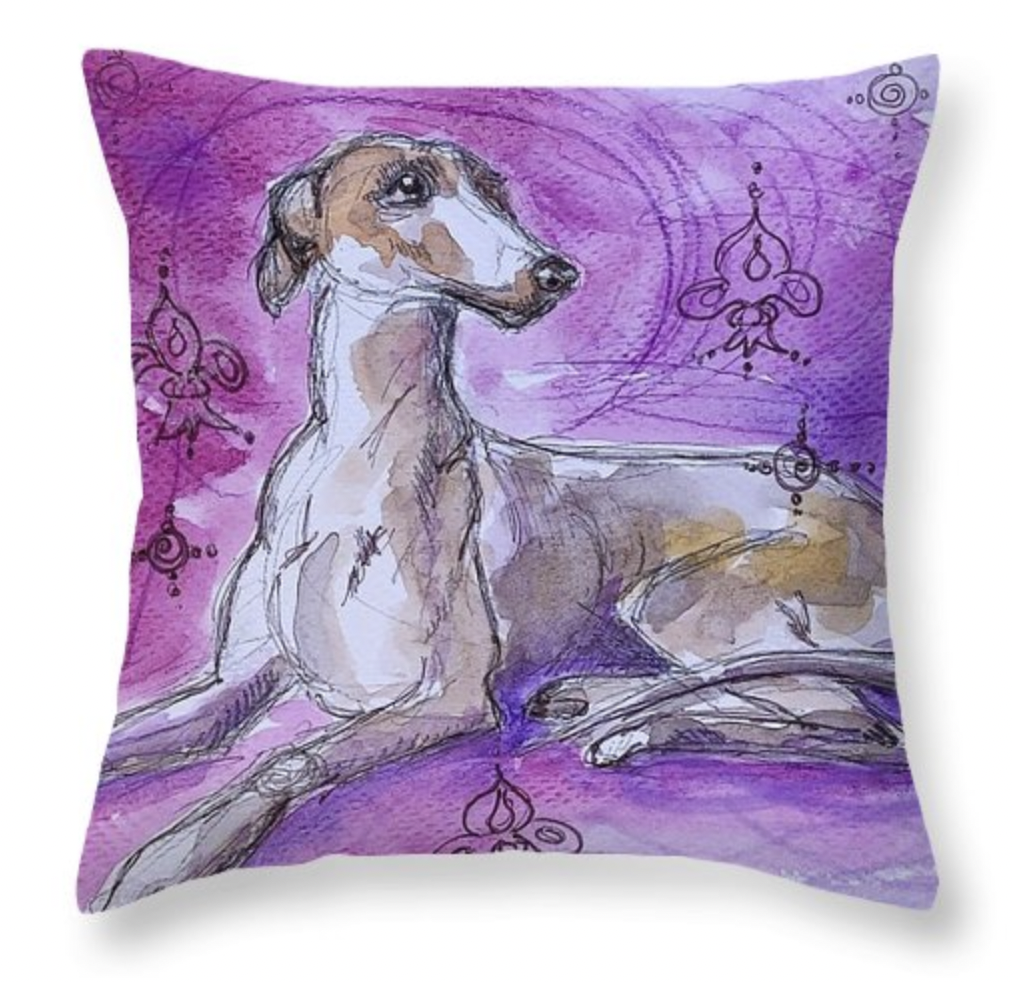Do you have a whippety question? Enter here your query or keyword.
- Home
- Whippet Training
- Leash Training a Dog
Leash Training a Dog in 3 Steps
Leash training a dog, as my first whippet pup showed me, can be easier than you expect.

Our whippet pup arrived after our much loved lurcher died of old age.
Nanà, our late lurcher, had been the companion of innumerable walks and horse rides, maid of honor at our marriage.
She had taught my children to walk, supporting them patiently while they were clutching at her coat.
To do all this she never needed any training to speak of, she seemed to be able to intuitively understand what was expected from her. Even walking nicely at my side came natural to her.
So, when our new whippet pup replaced her in my daily walks, I had the shock of discovering that leash training a dog could be a necessity.
Every few paces our new pup would firmly sit down and refuse to move, making me turn back, kneel down and call him in an exhausting caricature of a stroll.
After a month, my whippet had effectively trained me to walk like a lunatic.
At that point I decided to take in my hands the style of our walks, I bought a training collar and got ready for some firm training.
To my surprise as soon as I put on the puppy the new collar, he immediately got the idea and without further ado started walking at my side like any well mannered whippet is supposed to do.
In case you are not so lucky and things don't go so smoothly with your pet, here are a few suggestions to leash training a dog in few easy steps.

Step 1
If your puppy freezes in place, entice him with food. When he complies praise and reward. He will soon learn that following you has its rewards.
In case your dog lunges forward, don’t use the traditional training method of letting him pull ahead and then snap him back.
It
is not fair to punish your dog if you haven’t shown him first what to
do. Instead, give your whippet pup a few training sessions first.
Step 2
Place
him at your side (in obedience classes the “heel” is performed on the
left side) and while you walk talk to him. If necessary keep his
attention with food treats. Reward when he keeps the “heel” position at your side.
Step 3
If your dog still ignores all your efforts, practice turns and change of directions. This will keep his attention and force him to stay a little further back in relation to your position.
When
the training session is over, don’t forget to give your whippet puppy
the release word (generally “OK”) and let him sniff around at his
leisure as a well deserved reward.
Leash Training a Dog Video
Dog Choke Collars Are for Training not Choking
Dog choke collars are not for choking or for punishing your dog, they are effective means of communication with your pet.
This kind of collars are often used when leash training a dog.
They are made with a chain or a nylon ribbon with two rings at the extremities. Insert the chain in one of the rings, slip the collar on your dog and attach a leash to the other ring.
If the dog pulls ahead the collar will tighten, making a special sound.
This
will help you communicate with your dog about the speed and the
direction you want to take without the need for you of using any force.
This video from Petmate explains how to choose the right size for a dog choke collar and how use this comfort chain collar.
There is a right and a wrong way to put on your dog a slip collar.
When the dog walks on your left, the ring with the leash attached comes on the left side of the dog's neck. If you look at the dog from the front, the collar should form a P (like Perfect) with the loop of the P around your dog's neck.
To test the effect of a training collar, it is a good idea to try it first on yourself. Before using this collar on your pet, put it around your arm and pull to test how it will feel on your dog.
You can also ask a friend to "take you for a walk" to practice how it feels being trained before you actually train your dog.
The dog choker collar or better said, the training or slip collar, can be useful to guide and gently direct your pet.
It is very important that you never leave a choke collar on your dog when he is unattended, the free ring can get caught and the chain can work as a noose with disastrous consequences.
Remember to use this kind of collars very gently and only during a well planned training session.
Collars with smooth links work better because the ring slides better on the chain and immediately releases the pressure as soon as the dog gives in.
